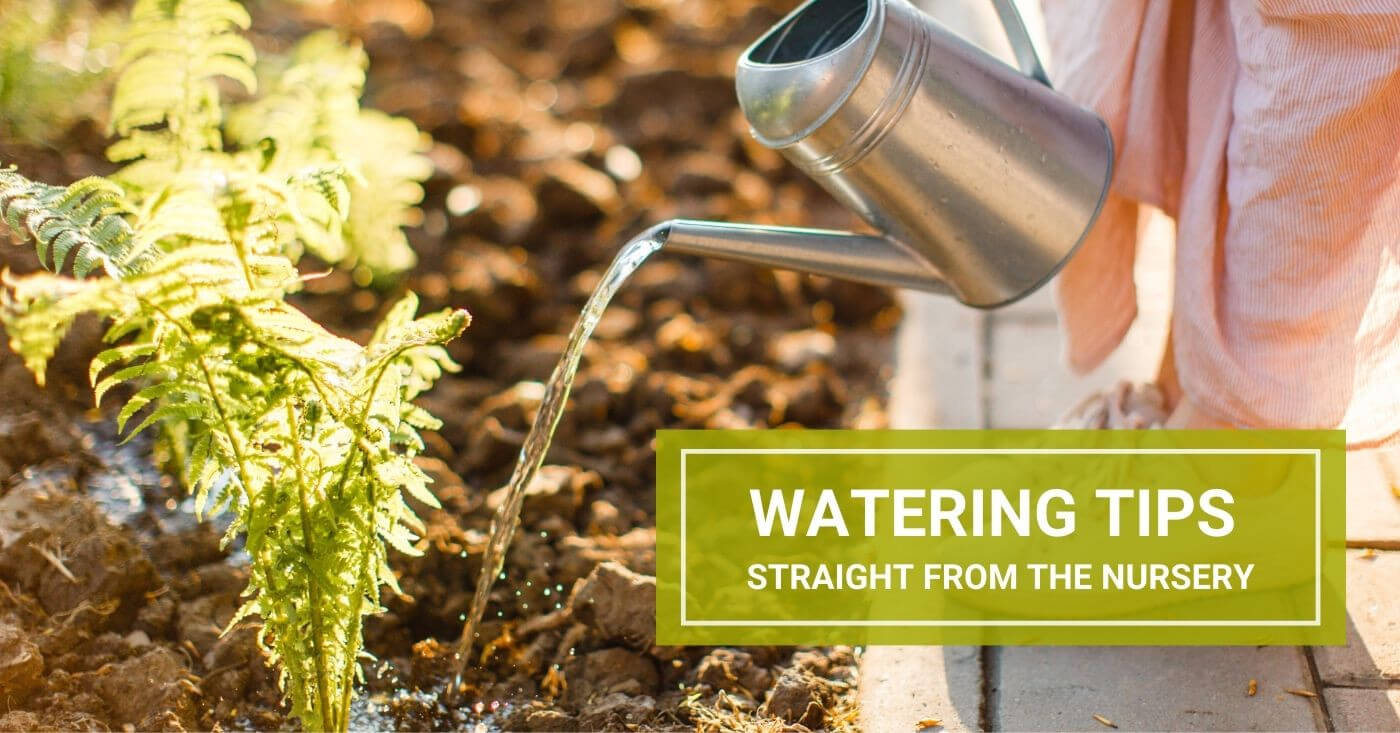One of the most common questions asked at our garden centers is, “How often should I water my plants?” While there’s no set rule on how often you should water, there are guidelines, especially during a drought. Our nursery staff have provided tips around watering, but this will depend on the type and age of the plant, how much rain your region has had, and soil type.
Proper watering is essential for maintaining thriving plants, especially newly planted ones. Young or recently transplanted perennials, shrubs, and trees need extra care to develop a strong root system. Below are some valuable plant watering tips to help you keep your plants healthy and vibrant:
- Water Early in the Day: Water your plants in the morning to allow them to absorb moisture before the heat of the day evaporates it. Early watering also helps prevent the growth of fungal diseases that thrive in damp conditions.
- Water at the Base: Direct your watering efforts to the base of the plants rather than overhead. Watering from below helps minimize wet foliage, reducing the risk of fungal issues.
- Deep Watering: Ensure that water reaches the root zone of the plants. A deep and thorough watering encourages plants to develop deep root systems, making them more resilient to drought conditions.
- Use a Soaker Hose or Drip Irrigation: Soaker hoses and drip irrigation systems efficiently deliver water directly to the plant roots, minimizing water wastage and reducing the risk of leaf diseases.
- Mulching: Apply a layer of organic mulch around your plants. Mulch helps retain soil moisture by reducing evaporation, regulating soil temperature, and suppressing weed growth. When in doubt, mulch it out!
- Monitor Soil Moisture: Regularly check the soil moisture level using your finger. For most plants, water when the top inch or two of soil feels dry for most plants. Moisture meters can be used to measure soil dryness, but they are not an exact science, and should not substitute for physically feeling the soil. One rule of thumb is about an inch of rain/water per week for established plants. However, some plants prefer slightly drier conditions, so research the specific needs of your plants.
- Avoid Overwatering: Overwatering can lead to root rot and other issues. Ensure that the plant's container or the soil in the garden has proper drainage to prevent waterlogging.
- Adjust for Weather Conditions: Adjust your watering schedule based on weather conditions. Plants may need more water during hot and dry periods, and less during cooler and rainy spells.
- Water Newly Planted Plants: Newly planted plants require extra attention. Water them more frequently until they establish their root systems and become more drought-resistant.
- Use a Watering Can: When hand-watering smaller areas, use a watering can to have more control over the amount and direction of water.
- Collect Rainwater: Consider setting up rain barrels to collect rainwater. This natural water source is ideal for plants and helps reduce your water bill.
- Learn Plant-Specific Needs: Different plants have different water requirements. Research and understand the specific needs of the plants in your garden to provide them with the appropriate amount of water.
Remember that every garden is unique, and factors like climate, soil type, and plant variety will influence your watering routine. By observing your plants and adjusting your watering practices accordingly, you'll be better equipped to provide the ideal moisture conditions for a thriving garden.
Looking for more gardening hacks? Check out our Green Tips page for more info! If you'd like to get in touch with us about specific plant questions, reach out to us here.





